Phytoremediation
An updated/enhanced excerpt from my book (Recipes For Reciprocity) offering info on remediating geoengineering material contaminated soils. An invitation to become Keystone Species in our bioregion.
Well my friends, here is the bad news, we were born onto a planet that had already been abused for centuries before we took our first breath. Within our lifetime the abuse has taken on a new form, intensity and severity… expressing itself in an array of biocidal chemicals (that are either released intentionally as weapons to end life for profiteering or, are byproducts of other industries). Combine that with the advent of weather warfare and geoengineering technologies and some would tell you that we have a pretty bleak future.
This can seem like a heavy weight to bear, but always remember that the Creator put you here for a reason, and gave you all the tools you need to serve a sacred role in healing and forging a better path forward. You are capable of being a force for healing and living in service of life, and I want to do what ever I can to support you on that path.
This post offers a section from the chapter of my book (Recipes For Reciprocity : The Regenerative Way From Seed To Table) pertaining to healing the living soil we depend on to feed our loved ones through forging alliances with our more skilled and learned rooted elders.
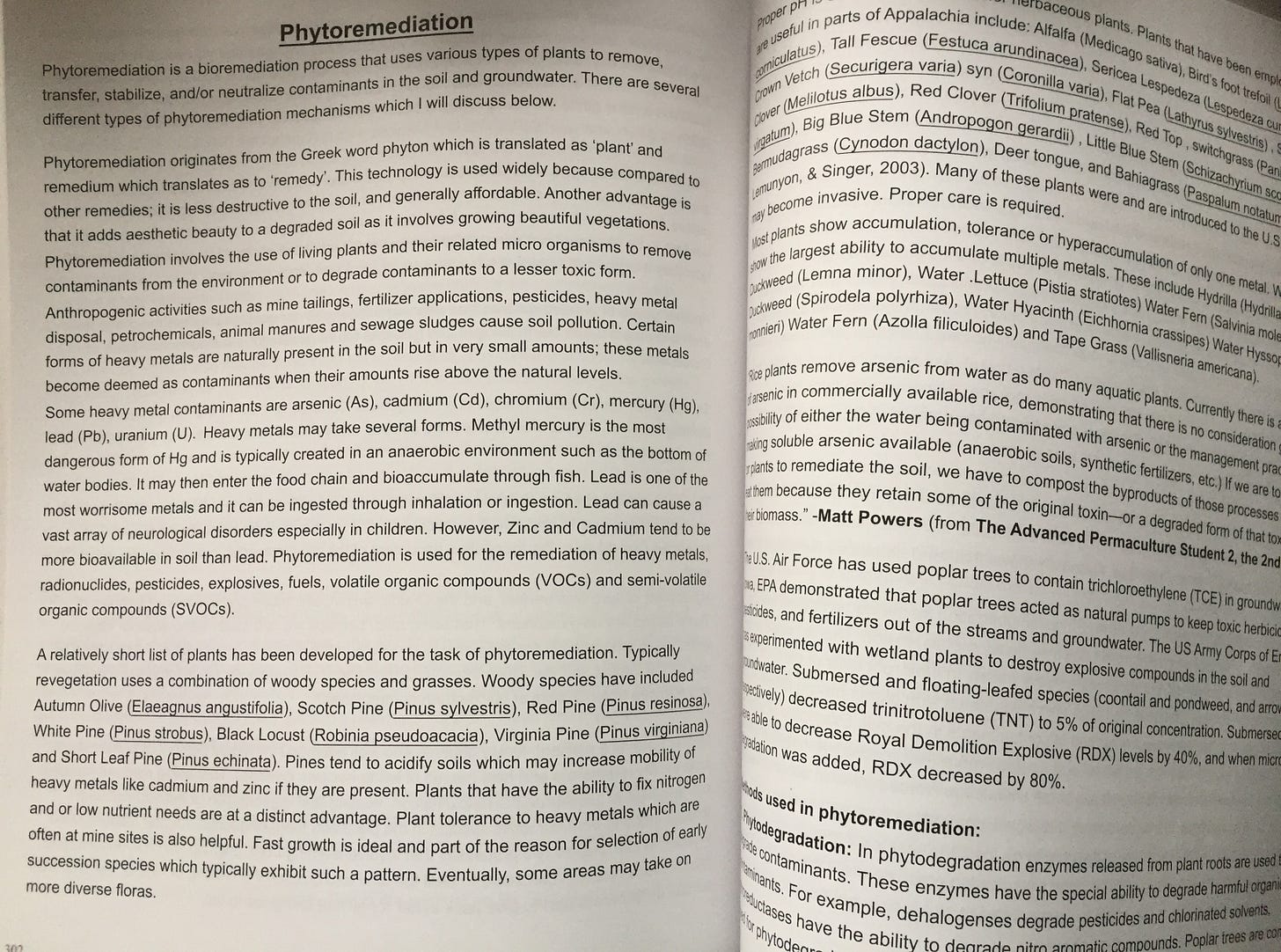
As you may have gathered from my posts, I do not subscribe to the fallacy of statist laws that seek to horde knowledge (and promote various forms of elitism and “trust the expertism”). I want each and everyone of us to be able to access knowledge and develop skills that empower us to embrace the role of a keystone species in our community (regardless of one’s financial situation). That is why I believe that information which can heal and unite our human family (with each other and our non-human kin) should be shared freely. I also believe that people that engage in important work to gather and publish such work deserve our support if we can give it. So please, if you can, support the authors that I list and link when I share their material in my posts through buying their books or subscribing to their publications if that option exists.
I share the following information with you as a gift. If you value this information and want to keep the gift in motion I would gladly accept a donation in the form of a paid subscription. Or, if you cannot afford to give the gift of fiat currency, I invite you to keep the gift in motion through putting this knowledge into action in your life, healing the soul, sharing this information with others, and thus passing the gifts I have received onto future generations. Thank you for joining me in this sacred act of perceiving, receiving and sharing of gifts.

Mother Earth is a resilient, highly capable and well equipped intelligent being that possesses the tools to fully regenerate and heal herself (if left to her own devices). That being said, we humans can also help to accelerate the detoxification, healing and regeneration of her eco-systems through learning from our elder species in the plant and fungi kingdoms. Thus, I have included this chapter which covers processes that involve learning from, aligning with and encouraging natural processes that can serve to heal the land and quicken the healing of Mother Earth so that we can do our small part to give back to her for all that she gives to us.
I would like to propose what may sound like a radical proposition to some nature lovers and environmentalist activists out there that may have been conditioned to subconsciously embrace a quasi-misanthropic view of humanity and our place on this world.
I do not advocate lessening our impact on the natural world. I think we should increase our impact on the more than human world ten fold.
As Lyla June says in this video clip we can use these human hands to heal, proliferate amazing abundance, becoming an asset to the Earth and making her feel grateful for our presence.
I think we should use these amazing human hands and powerful brains that God gave us to have a huge impact, like the people of the Amazon did when they created the Terra Preta soils that allowed them to co-create the giant food forests of the Amazon jungle that have persisted for 4500 years.
Instead of internalizing the false idea that portrays humans like a plague or a cancer on the Earth, I advocate we instead use our free will (and the sentience that so many humans covetously claim is unique to our species) to instead choose to define ourselves as co-creators of beauty, abundance and diversity.
Our ancient ancestors have shown us by example that it is possible to become a positive force for impacting nature in a way that honors and nurtures life, rather than defining our selves as takers, users and consumers.
Destruction and degeneration are not inevitable. Humans are not inherently parasitic and extractive as the anti-human globalist propaganda implies.
Humans have the capability of either being takers/consumers (extracting from the Earth but giving nothing back) or givers and healers (living within a web of reciprocal gift exchanges).
Both choices can be observed in individuals in our lives and cultures throughout history.
This post is about inviting you to let go of the propaganda that says you are a burden on the Earth and instead embrace your ancestral and God given role as a steward, healer and propagator of abundance.
Phytoremediation is a bioremediation process that uses various types of plants to remove, transfer, stabilize, and/or neutralize contaminants in the soil and groundwater. There are several different types of phytoremediation mechanisms which I will discuss below.
Phytoremediation originates from the Greek word phyton which is translated as ‘plant’ and remedium which translates as to ‘remedy’. This technology is used widely because compared to other remedies; it is less destructive to the soil, and generally affordable. Another advantage is that it adds aesthetic beauty to a degraded soil as it involves growing beautiful vegetations.
Phytoremediation involves the use of living plants and their related micro organisms to remove contaminants from the environment or to degrade contaminants to a lesser toxic form.
Anthropogenic activities such as mine tailings, fertilizer applications, pesticides, heavy metal disposal, petrochemicals, glyphosate, weather warfare and sewage sludges cause soil pollution.
Certain forms of heavy metals are naturally present in the soil but in very small amounts; these metals become deemed as contaminants when their amounts rise above the natural levels.
Geoengineering operations are a significant cause of toxins in our soil and air.
Some heavy metal contaminants are aluminium (Al), barium (Ba), strontium (Sr), graphene, arsenic (As), cadmium (Cd), chromium (Cr), mercury (Hg), lead (Pb), uranium (U).
Heavy metals may take several forms. Methyl mercury is the most dangerous form of Hg and is typically created in an anaerobic environment such as the bottom of water bodies. It may then enter the food chain and bioaccumulate through fish. Lead is one of the most worrisome metals and it can be ingested through inhalation or ingestion. Lead can cause a vast array of neurological disorders especially in children. However, Zinc and Cadmium tend to be more bioavailable in soil than lead.
Phytoremediation is used for the remediation of heavy metals, radionuclides, pesticides, explosives, fuels, volatile organic compounds (VOCs) and semi-volatile organic compounds (SVOCs).
A relatively short list of plants has been developed for the task of phytoremediation. Typically revegetation uses a combination of woody species and grasses. Woody species have included Autumn Olive (Elaeagnus angustifolia), Scotch Pine (Pinus sylvestris), Red Pine (Pinus resinosa), White Pine (Pinus strobus), Black Locust (Robinia pseudoacacia), Virginia Pine (Pinus virginiana) and Short Leaf Pine (Pinus echinata).
Pines tend to acidify soils which may increase mobility of heavy metals like cadmium and zinc if they are present. Plants that have the ability to fix nitrogen and or low nutrient needs are at a distinct advantage. Plant tolerance to heavy metals which are often at mine sites is also helpful. Fast growth is ideal and part of the reason for selection of early succession species which typically exhibit such a pattern. Eventually, some areas may take on more diverse floras.
Proper pH is even more important for herbaceous plants. Plants that have been employed and are useful in parts of Appalachia include: Alfalfa (Medicago sativa), Bird’s foot trefoil (Lotus corniculatus), Tall Fescue (Festuca arundinacea), Sericea Lespedeza (Lespedeza cuneata), Crown Vetch (Securigera varia) syn (Coronilla varia), Flat Pea (Lathyrus sylvestris) , Sweet Clover (Melilotus albus), Red Clover (Trifolium pratense), Red Top , switchgrass (Panicum virgatum), Big Blue Stem (Andropogon gerardii) , Little Blue Stem (Schizachyrium scoparius), Bermudagrass (Cynodon dactylon), Deer tongue, and Bahiagrass (Paspalum notatum) (Karlen, Lemunyon, & Singer, 2003).
Most plants show accumulation, tolerance or hyperaccumulation of only one metal. Water plants show the largest ability to accumulate multiple metals. These include Hydrilla (Hydrilla verticillata), Duckweed (Lemna minor), Water .Lettuce (Pistia stratiotes) Water Fern (Salvinia molesta) Giant Duckweed (Spirodela polyrhiza), Water Hyacinth (Eichhornia crassipes) Water Hyssop (Bacopa monnieri) Water Fern (Azolla filiculoides) and Tape Grass (Vallisneria americana).
“Rice plants remove arsenic from water as do many aquatic plants. Currently there is an epidemic of arsenic in commercially available rice, demonstrating that there is no consideration given to the possibility of either the water being contaminated with arsenic or the management practices making soluble arsenic available (anaerobic soils, synthetic fertilizers, etc.)
(Here are a couple ways I like to remediate my rice prior to eating)
If we are to use fungi or plants to remediate the soil, we have to compost the byproducts of those processes and not eat them because they retain some of the original toxin—or a degraded form of that toxin—in their biomass.”
-Matt Powers (from The Advanced Permaculture Student 2, the 2nd edition)
The U.S. Air Force has used poplar trees to contain trichloroethylene (TCE) in groundwater. In Iowa, EPA demonstrated that poplar trees acted as natural pumps to keep toxic herbicides, pesticides, and fertilizers out of the streams and groundwater. The US Army Corps of Engineers has experimented with wetland plants to destroy explosive compounds in the soil and groundwater. Submersed and floating-leafed species (coontail and pondweed, and arrowhead, respectively) decreased trinitrotoluene (TNT) to 5% of original concentration. Submersed plants were able to decrease Royal Demolition Explosive (RDX) levels by 40%, and when microbial degradation was added, RDX decreased by 80%.
Methods used in phytoremediation:
1. Phytodegradation: In phytodegradation enzymes released from plant roots are used to degrade contaminants. These enzymes have the special ability to degrade harmful organic contaminants. For example, dehalogenses degrade pesticides and chlorinated solvents, nitroreductases have the ability to degrade nitro aromatic compounds. Poplar trees are commonly used for phytodegradation.
2. Phytovolatalization: Some plants can take up toxic organic compounds from soil, convert them to non-toxic forms and then release them to the atmosphere through evapotranspiration. A well known example is the use of poplar trees to volatilize trichloroethylene (TCE). Astragalus bisulcatus (the two-grooved milkvetch), and Stanleya pinnata (desert princesplume) also have the ability to accumulate high levels of selenium.
3. Phytoextraction: Giant underground networks formed by the roots of living plants function as solar-driven pumps that extract and concentrate essential elements and compounds from soil and water. Absorbed substances are used to support reproductive function and carbon fixation within shoots. Metal phytoextraction relies on metal-accumulating plants to transport and concentrate polluting metals, such as lead, uranium, and cadmium, from the soil into the harvestable aboveground shoots.
This strategy relies on a plants ability to take up and store high concentrations of toxic metals or organic compounds in their aerial parts. Plants with this ability are called hyperaccumulators. They are able to detoxify heavy metals in their leaves and other aboveground parts. Some plants with this unique characteristics are Elsholtzia splendens, Thlaspi caerulescens (alpine pennygrass), Pteris vittata (Chinese brake), Astragalus bisulcatus (the two-grooved milkvetch), and Stanleya pinnata (desert princesplume). Hyperacculmulator plant species are capable of accumulating 100 times more metal than a typical plant. Typically hyperaccumulators will take up greater than 1% of their mass in metals. Most hyperaccumulators that have been identified take up Ni while some have been shown to accumulate Pb, Cd, Co, Cu, Se, and Zn. Alyssum is a common plant that has been shown to be a hyperaccumulator of Ni.
One strategy for increasing the efficiency of phytoextraction is to increase metal translocation to the shoot by increasing plant transpiration. Research shows that wind enhances metal flux to the shoots.
4. Phytostabilization/phytoimmobilization: Phytoimmobilization as the name implies involves the use of plants to immobilize contaminants (such as heavy metals) in soil. This is based on the ability of some plants to take up and accumulate heavy metals in their root cells or bind contaminants in the humus. Contaminated soils are re-vegetated with plants having these characteristics, to stop the movement or spread of contaminants in the soil. Examples of such plants are: Dactylis glomerata (orchard grass) and Festuca rubra (red fescue).
Although the benefits of phytoremediation are obvious it has some limitations. Remediation of contaminated soils is restricted to the depth of the root zones, it is a slow process as it takes years to accomplish, high concentrations of heavy metals may be toxic to livestock if they feed on plants growing on remediative sites. Phytoremediation is a fascinating process and it proves that there is much to be learned about the unique abilities of plants. Researchers are continuously looking for ways to improve and effectively utilize this technique.
5. Rhizosphere biodegradation: In this process, the plant releases natural substances through its roots, supplying nutrients to microorganisms in the soil. The microorganisms enhance biological degradation.
6. Hydraulic Control: In this process, trees indirectly remediate by controlling groundwater movement. Trees act as natural pumps when their roots reach down towards the water table and establish a dense root mass that takes up large quantities of water. A poplar tree, for example, pulls out of the ground 30 gallons of water per day, and a cottonwood can absorb up to 350 gallons per day.
7. Hydroponic Systems for Treating Water Streams (Rhizofiltration): Rhizofiltration is similar to phyto-accumulation, but the plants used for cleanup are raised in greenhouses with their roots in water. This system can be used for ex-situ groundwater treatment. That is, groundwater is pumped to the surface to irrigate these plants. Typically hydroponic systems utilize an artificial soil medium, such as sand mixed with perlite or vermiculite. As the roots become saturated with contaminants, they are harvested and disposed of.
A List of Plants That Can Be Used For For Phytoremediation (not exhaustive):
1. Indian mustard (Brassica juncea L.) Info: Brassica juncea (L.) Czern. –
As the International Journal of Molecular Sciences has published, heavy metals affect not only industrial sites but also cultivated land, spreading risks for human health. Brassicaceae species are really useful to accumulate certain metals while producing high quantities of biomass in the process, and Indian mustard is the star of this group.
It can remove three times more Cd than others, reduce 28% of Pb, up to 48% of Se, and it is effective against Zn, Hg and Cu as well. However, what is unknown is that Indian mustard removed radioactive Cs137 from Chernobyl (Phytoremediation of Radiocesium-Contaminated Soil in the Vicinity of Chernobyl, Ukraine) in the 80´s as well.
2. Willow (Salix species). (White Willow)
The water loving plants beautify landscapes, however, it’s worth is not confined to its appearance only. They have a more interesting use for phytoremediation as well: their roots have demonstrated (Response of Salix alba L. to heavy metals and diesel) viability, accumulating lower levels of heavy metals than Brassicaceae, and they deal with Cd, Ni and Pb, and work even in mixed heavy metals like diesel fuel polluted sites
3. Poplar trees (Populus deltoides). (Populus deltoides W. Bartram ex Marshall eastern cottonwood)
The advantageous effect of poplar trees on soil and underwater has also been widely studied. Their secret lies in the naturally well-designed root system which take up large quantities of water.
Chlorinated solvents such as trichloroethylene, or the well-known carcinogenic carbon tetrachloride (95% of substance removed) are the organic pollutants that hybrid poplars face better, according to research from National Institute of Environmental Health Sciences. What is more, PhytoPet(Bioremediation of Aquatic and Terrestrial Ecosystems), the Canadian database for bioremediation methods, remarks that poplar trees can degrade petroleum hydrocarbons like benzene, toulene and o-xylene. Although they are not very common in public gardens, you have one sample of poplar tree integration in this interesting LAN article, The Sensational Hive Project by World Renowned Grant Associates written by Erin Tharp.
4. Indian grass (Sorghastrum nutans) (Sorghastrum nutans (L.) Nash)
Research looked at how this Midwestern U.S. native plant benefits soil and ground water around them. Many people can find Indian grass growing along the roadsides without noticing its power to detoxify common agro-chemical residues such as well-known pesticides and herbicides related to atrazine and metalochlor.
Indian grass is one of the nine members of the graminae family identified by PhytoPet (Bioremediation of Aquatic and Terrestrial Ecosystems), as capable to remediate petroleum hydrocarbons. The list includes other grasses like Common buffalo grass or Western wheatgrass, leading the ranking.
5. Sunflower (Helianthus Annuus L.) (Helianthus annuus L. common sunflower)
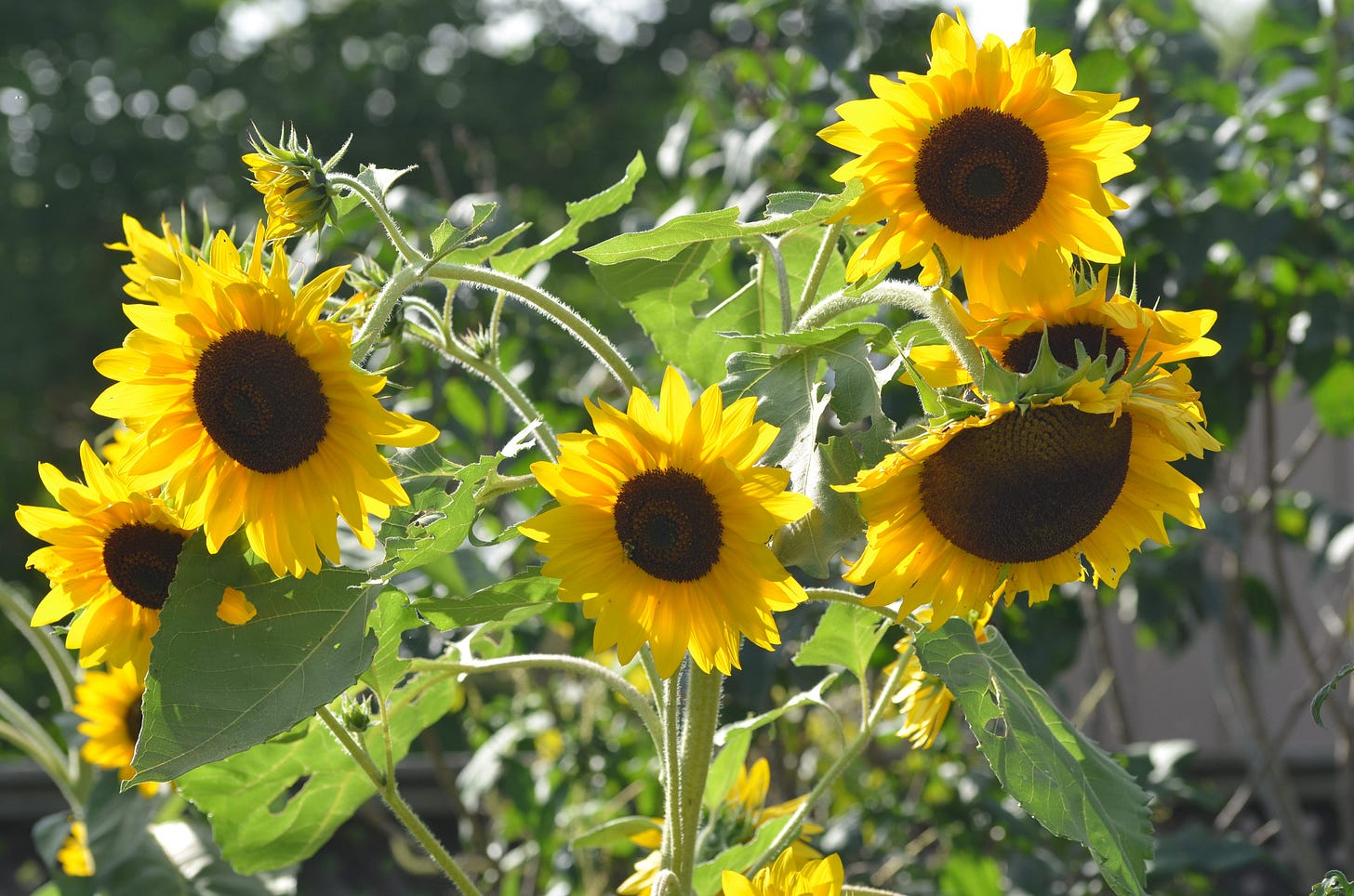
Experiments like Influence of the sunflower rhizosphere on the biodegradation of PAHs in soil reveals that sunflowers reduce different PAH level from soil, in an effective way, but what is really surprising is how varied range of contaminants they can accumulate. Heavy metals such as Pb, Zn (Heavy Metals Extraction Potential of Sunflower (Helianthus annuus) and Canola (Brassica napus)), N, P, K, Cd, Cu or Mn (Capability Of Heavy Metals Absorption By Corn, Alfalfa And Sunflower Intercropping Date Palm), seem to be its food, which is great news because sunflowers have a quick growth to start working soon.
In fact, one month old plants reached the incredible goal of removing more than 95% of uranium in 24 hours, (Sunflower (Helinathus annuus L.)) which shows their power to remove radioactive metals, including Cs and Sr from superficial underground water. When reinforcing the effect of sunflowers with other species, it seems highly successful for many sites, for example waste mining sites.
6. Mimiso tree (Albizia julibrissin)
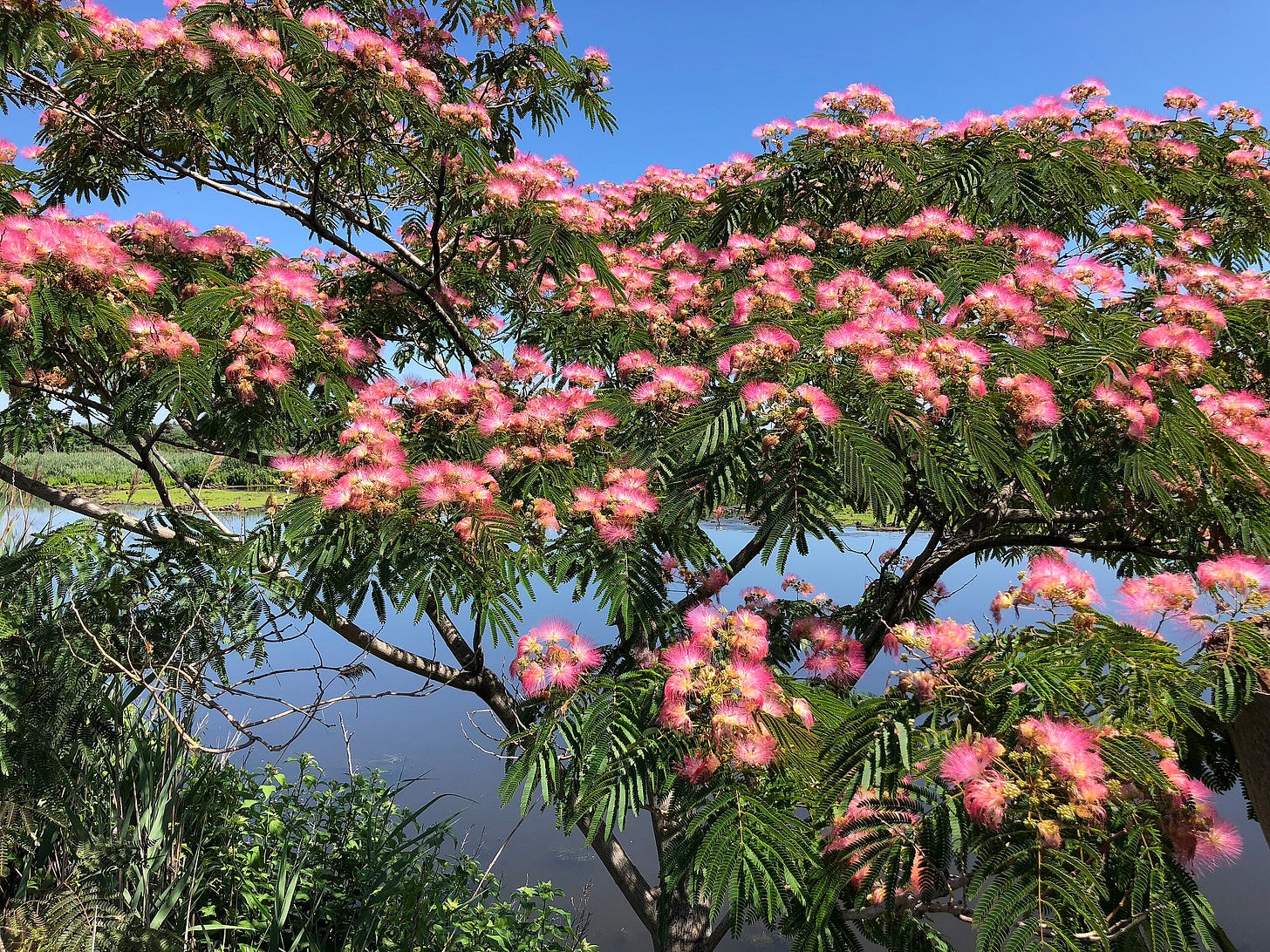
This tree is being investigated for it’s potential in Phytoremediation (for both heavy metal soil remediation and for it’s photocatalytic activity for cleaning up toxins humans put in the air) and a more specialized field in what is called “Phytomining” (it is a nasty industrial process used for profit but it hints at more holistic applications of this species for real time remediating/mitigating of geoengineering heavy metals in the air and soil.
Check out this post on the tree as well: https://kenshohomestead.org/2024/06/23/herbal-explorations-mimosa-tree/
7. French marigold (Tagetes patula)
Two different marigold species (Tagetes patula and Tagetes erecta) have been studied for remediating heavy metals under nine soils of different nature spiked with metals. Studies found that these plants are effective in removing heavy metal pollution load indexes in these polluted soils. The flowers are particularly effective in remediating Graphene polluted soils (which are a key component in the geoengineering/weather warfare patents).
Southern Cattail (Typha domingensis)
Typha domingensis species, are effective for the phytoremediation of barium-polluted flooded soils. This species can also remove heavy metals (cadmium (Cd), nickel (Ni), lead (Pb), and chromium (Cr)) in water rich environments.
Barium is one of the main components in many geoengineering patents.
For more info on geoengineering, read:
Water Spinach (Ipomoea aquatica)
Ipomoea aquatica can be used as a phytoremediation plant for removing aluminum (Al). Study results showed that the metal concentration exhibits a good relationship for reflecting the decrease in the metal concentration with the proportion of treatment day. It was found that I. aquatica accumulates higher Al and Fe contents than C. asiatica. The translocation factor of both plants was found to be greater than 1, implying that both plants can accumulate and extract heavy metals from contaminated mediums). Which, I will re-iterate, means you should be careful where you source this plant, given it can hyperaccumulate toxic heavy metals that are being sprayed on us in weather warfare programs).
Centella asiatica can be used as a phytoremediation plant for removing aluminum (Al). Study results showed that the metal concentration exhibits a good relationship for reflecting the decrease in the metal concentration with the proportion of treatment day. It was found that I. aquatica accumulates higher Al and Fe contents than C. asiatica. The translocation factor of both plants was found to be greater than 1, implying that both plants can accumulate and extract heavy metals from contaminated mediums). Which, I will re-iterate, means you should be careful where you source this plant, given it can hyperaccumulate toxic heavy metals that are being sprayed on us in weather warfare programs).
Tea-oil Camellia (Camellia oleifera):
Oiltea camellia (Camellia oleifera Abel.), an aluminium (Al) hyperaccumulator, grows well on acid soils in some temperate as well as tropical or subtropical areas.
This plant sucks up aluminium into its leaves from the soil. So if you companion planted this shrub with other crops. The other crops nearby would be less exposed to soil based aluminium nano- particulates.
https://www.sciencedirect.com/science/article/abs/pii/S1002016011601367
For more info on plant species for phytoremediation of aluminium (and other heavy metals):
- Camellia sinensis (so be careful with Green Tea from areas contaminated)
“New aluminum hyperaccumulator species”
https://link.springer.com/article/10.1007/s11104-019-04289-2
“A global database for plants that hyperaccumulate metal and metalloid trace elements”
https://nph.onlinelibrary.wiley.com/doi/10.1111/nph.14907
New plants are discovered every year, and the already known ones are included in experiments to determine the effects of pollutants exposure. There is no fixed recipe, but we you have seen, the results are more than promising and economically viable.
Phytoremediation of indoor environments:
Many toxins that occur in the home environment need to be removed to facilitate good human health. Various plant species have been shown to remove indoor air pollutants (IAPs). Some of The IAP substances that researchers have removed with plants include Formaldehyde, Xylene, Toulene, and Benzene.
Sources of some major common indoor air pollutants:
Xylene:
Gasoline, marker pens, photocopiers, printers, adhesives, joint compounds, floor coverings, solvents, dyes, kerosene smoke
Toulene:
Synthetic carpet, wood floor finishes, cigarette smoke, printers, photocopiers, solvents, adhesives, wallpaper, joint compound, vinyl flooring, caulking compound, paint, kerosene smoke
Formaldehyde:
Cigarette smoke, glues, resins, carpets, curtains, facial tissues, floor coverings, gas stoves, grocery bags, paints, paper towels, particle board, permanent press clothing, plywood, stains, varnishes, foam insulation.
Benzene:
Solvents, tobacco smoke, paints, finishes, caulk.
Several of the plants that remove indoor toxins are relatively easy to propagate. Propagation is the process by which a plant is reproduced. However, some of the plants that remove toxins from the air are themselves also toxic. The toxicity of plants is mostly concern in the case of accidental ingestion by young children/pets. Therefore, house plant owners must be as aware of plant toxicity as they are of air toxicity. When possible poisoning by children is a factor less toxic plants could be chosen. Some of the effective and easy to propagate plants include:
Air Plant (Chlorophytum comosum), English Ivy (Hedera helix), Golden Pothos (Epiprenum aureum) Mother in law’s tongue (Sansevieria trifasciata) Aloe (Aloe barbandensis) and Rubber Plant (Ficus elastica syn F. robusta).
These plant types represent air cleaning species that are easy to obtain cheaply while also being relatively easy to propagate.
English Ivy (Hedera helix) has been shown by to remove formaldehyde the most followed by Spider Plant (Chlorophytum comosum), Snake Plant (Sansevieria trifasciata) and Aloe (Aloe barbadenis).
However Spider plant removes the most Xylene followed by Snake Plant and English Ivy (B. C. Wolverton & Wolverton, 1993). In another study Golden Pothos (Epiprenum aureum) was also shown to remove comparable amounts of formaldehyde to English Ivy. English Ivy is also the best at removing benzene and Golden Pothos is third. Monkey grass (Liriope spicata) is another potential good IAP detoxifying plant. It is second overall to the plants studied in formaldehyde and xylene removal as well as a strong remover of ammonia. Florist’s mum (Chrysanthemum morifolium) is another potentially readily available good detoxifier of formaldehyde, xylene and ammonia. Typically ferns, members of the Ficus genus, and members of the Peace Lily (Araceae) Palm (Arecaceae) and Agave (Agavaceae) families have been shown to be the best at detoxifying in general for formaldehyde, xylene, ammonia, and benzene.
Limitations and Considerations:
The toxicity and bioavailability of biodegradation products is not always known. Some phytoremediation transfers contamination across media, (e.g., from soil to air).
The depth of the contaminants limits treatment. The treatment zone is determined by plant root depth. In many cases, it is limited to shallow soils, streams, and groundwater. Pumping the water out of the ground and using it to irrigate plantations of trees may treat contaminated groundwater that is too deep to be reached by plant roots.
Generally, the use of phytoremediation is limited to sites with lower contaminant concentrations and contamination in shallow soils, streams, and groundwater. However, researchers are finding that the use of trees (rather than smaller plants) allows them to treat deeper contamination because tree roots penetrate more deeply into the ground.
Degradation by-products may be mobilized in groundwater or bio-accumulated in animals. Additional research is needed to determine the fate of various compounds in the plant metabolic cycle to ensure that plant droppings and products do not contribute toxic or harmful chemicals into the food chain. Therefore one should never eat plants (or feed plants to animals) that are being used in Phytoremediation efforts.
Some plants are naturally tolerant to metalliferous soils. Within these species intra-specific tolerance can vary greatly. Plants also vary in their transport of metals from root to shoot which may be an issue with grazing animals. Paper birch (Betula papyrifera) has been shown to accumulate twice as much copper as many other trees while only translocating 20% of the Cu into its foliage versus 60% for the other trees studied (Lepp & Dickinson, 1998). Plants that deposit metals in their foliage can act as a vector of toxic exposure for wildlife and even ultimately people.
I create the following two posts to deal with Glyphosate and Dioxin detox and remediation specifically, since we have a lot of that garbage being dumped on us and the land now.
For more specialized and up to date info on remediation get Matt Power’s book titled “Regenerative Soil - 2nd Edition: The Science & Solutions”
Here are a few pics from the book that pertain to this:
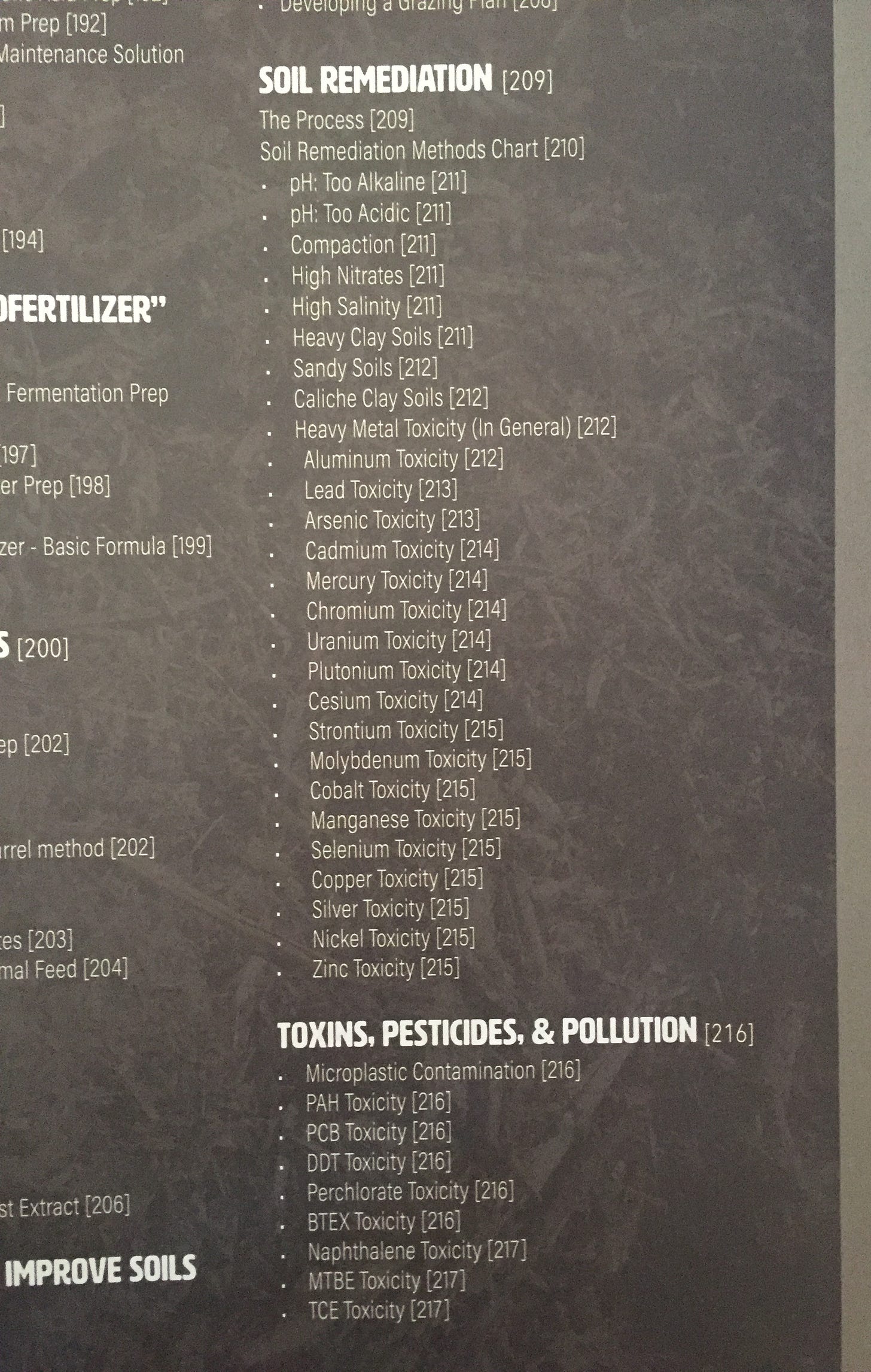
for more info check out Matt’s youtube:
References:
https://permaculturepractice.com/soil-remediation-plants/#:~:text=Key%20Takeaways,heavy%20metals%20and%20organic%20pollutants.
https://pmc.ncbi.nlm.nih.gov/articles/PMC7203417/
https://www.researchgate.net/publication/340894603_Phytoremediation_green_technology_for_improving_aquatic_and_terrestrial_environments
https://www.researchgate.net/publication/344227844_Using_Plants_in_Conjunction_with_Permaculture_Design_Principles_to_Provide_an_Effective_and_Affordable_Way_to_Address_Air_Pollution_in_Urban_Areas
https://chriscondello.wordpress.com/2013/03/18/practical-permaculture-plants-and-phytoremediation-2/
https://www.curbed.com/2017/6/28/15885436/air-pollution-solutions-citytree-urban-greenery
https://innspub.net/phytoremediation-of-barium-copper-zinc-and-arsenic-contaminated-soils-by-sunflower-and-alfalfa/
https://www.tandfonline.com/doi/pdf/10.1080/15226514.2021.1985960#:~:text=Hassan%20et%20al.-,2020).,polluted%20soils%20of%20different%20nature.
https://www.sciencedirect.com/science/article/pii/S0147651321000014
https://pubmed.ncbi.nlm.nih.gov/24369743/
https://link.springer.com/article/10.1007/s10452-022-09945-x#:~:text=Cd%20(0.79).-,T.,Ni%2C%20Cr%2C%20and%20Cd.
https://www.tandfonline.com/doi/pdf/10.1080/15226514.2021.1985960#:~:text=Hassan%20et%20al.-,2020).,polluted%20soils%20of%20different%20nature.
https://pmc.ncbi.nlm.nih.gov/articles/PMC9824536/
https://www.jocpr.com/articles/phytoremediation-of-aluminium-and-lead-using-raphanus-sativus-vigna-radiata-and-cicer-arietinum.pdf
https://pubmed.ncbi.nlm.nih.gov/16876232/
https://pmc.ncbi.nlm.nih.gov/articles/PMC7511751/
Aken B. V., Correa P. A., Schnoor J. L. (2009). Phytoremediation of polychlorinated biphenyls: new trends and promises. Environ. Sci. Technol. 44 2767–2776. 10.1021/es902514d [DOI] [PMC free article] [PubMed] [Google Scholar]
Ali H., Khan E., Sajad M. A. (2013). Phytoremediation of heavy metals-concepts and applications. Chemosphere 91 869–881. 10.1016/j.chemosphere.2013.01.075 [DOI] [PubMed] [Google Scholar]
Ali H., Naseer M., Sajad M. A. (2012). Phytoremediation of heavy metals by Trifolium alexandrinum. Int. J. Environ. Sci. 2 1459–1469. 10.6088/ijes.002020300031 18327685 [DOI] [Google Scholar]
Altinözlü H., Karagöz A., Polat T., Ünver I. (2012). Nickel hyperaccumulation by natural plants in Turkish serpentine soils. Turk. J. Bot. 36 269–280. 10.3906/bot-1101-10 [DOI] [Google Scholar]
Alvarenga P., Gonçalves A., Fernandes R., De Varennes A., Vallini G., Duarte E., et al. (2009). Organic residues as immobilizing agents in aided phytostabilization:(I) Effects on soil chemical characteristics. Chemosphere 74 1292–1300. 10.1016/j.chemosphere.2008.11.063 [DOI] [PubMed] [Google Scholar]
Arshad M., Saleem M., Hussain S. (2007). Perspectives of bacterial ACC deaminase in phytoremediation. Trends Biotechnol. 25 356–362. 10.1016/j.tibtech.2007.05.005 [DOI] [PubMed] [Google Scholar]
Ashraf S., Ali Q., Zahir Z. A., Ashraf S., Asghar H. N. (2019). Phytoremediation: environmentally sustainable way for reclamation of heavy metal polluted soils. Ecotox. Environ. Safe. 174 714–727. 10.1016/j.ecoenv.2019.02.068 [DOI] [PubMed] [Google Scholar]
Assunção A., Martins P. D. C., De Folter S., Vooijs R., Schat H., Aarts M. (2001). Elevated expression of metal transporter genes in three accessions of the metal hyperaccumulator Thlaspi caerulescens. Plant Cell Environ. 24 217–226. 10.1111/j.1365-3040.2001.00666.x [DOI] [Google Scholar]
Axelsen K. B., Palmgren M. G. (2001). Inventory of the superfamily of P-type ion pumps in Arabidopsis. Plant Physiol. 126 696–706. 10.1104/pp.126.2.696 [DOI] [PMC free article] [PubMed] [Google Scholar]
Baker A., Brooks R. (1989). Terrestrial higher plants which hyperaccumulate metallic elements. A review of their distribution, ecology and phytochemistry. Biorecovery 1 81–126. 10.1080/01904168109362867 [DOI] [Google Scholar]
Bani A., Pavlova D., Echevarria G., Mullaj A., Reeves R. D., Morel J. L., et al. (2010). Nickel hyperaccumulation by the species of Alyssum and Thlaspi (Brassicaceae) from the ultramafic soils of the Balkans. Bot. Serb. 34 3–14. [Google Scholar]
Banuelos G., Cardon G., Mackey B., Ben−Asher J., Wu L., Beuselinck P., et al. (1993). Boron and selenium removal in boron−laden soils by four sprinkler irrigated plant species. J. Environ. Qual. 22 786–792. 10.2134/jeq1993.00472425002200040021x [DOI] [Google Scholar]
Banuelos G., Meek D. (1990). Accumulation of selenium in plants grown on selenium-treated soil. J. Environ. Qual. 19 772–777. 10.2134/jeq1990.00472425001900040023x [DOI] [Google Scholar]
Bastow E. L., Garcia De La Torre V. S., Maclean A. E., Green R. T., Merlot S., Thomine S., et al. (2018). Vacuolar iron stores gated by NRAMP3 and NRAMP4 are the primary source of iron in germinating seeds. Plant Physiol. 177 1267–1276. 10.1104/pp.18.00478 [DOI] [PMC free article] [PubMed] [Google Scholar]
Becerra-Castro C., Prieto-Fernández Á, Álvarez-López V., Monterroso C., Cabello-Conejo M., Acea M., et al. (2011). Nickel solubilizing capacity and characterization of rhizobacteria isolated from hyperaccumulating and non-hyperaccumulating subspecies of Alyssum serpyllifolium. Int. J. Phytoremediat. 13 229–244. 10.1080/15226514.2011.568545 [DOI] [PubMed] [Google Scholar]
Berken A., Mulholland M. M., Leduc D. L., Terry N. (2002). Genetic engineering of plants to enhance selenium phytoremediation. Crit. Rev. Plant Sci. 21 567–582. 10.1080/0735-260291044368 [DOI] [Google Scholar]
Berti W. R., Cunningham S. D. (2000). “Phytostabilization of metals,” in Phytoremediation of Toxic Metals: Using Plants to Clean-up the Environment, eds Raskin I., Ensley B. D. (New York, NY: John Wiley & Sons, Inc.), 71–88. [Google Scholar]
Bizily S. P., Rugh C. L., Meagher R. B. (2000). Phytodetoxification of hazardous organomercurials by genetically engineered plants. Nat. Biotechnol. 18 213–217. 10.1038/72678 [DOI] [PubMed] [Google Scholar]
Blaylock M., Huang J. (2000). “Phytoextraction of metals,” in Phytoremediation of Toxic Metals: Using Plants to Clean-up the Environment, eds Raskin I., Ensley B. D. (New York, NY: John Wiley & Sons, Inc; ), 303. [Google Scholar]
Braud A., Jézéquel K., Bazot S., Lebeau T. (2009). Enhanced phytoextraction of an agricultural Cr- and Pb-contaminated soil by bioaugmentation with siderophore-producing bacteria. Chemosphere 74 280–286. 10.1016/j.chemosphere.2008.09.013 [DOI] [PubMed] [Google Scholar]
Brewer E. P., Saunders J. A., Angle J. S., Chaney R. L., Mcintosh M. S. (1999). Somatic hybridization between the zinc accumulator Thlaspi caerulescens and Brassica napus. Theor. Appl. Genet. 99 761–771. 10.1007/s001220051295 [DOI] [Google Scholar]
Brown S. L., Chaney R., Angle J., Baker A. (1994). Phytoremediation potential of Thlaspi caerulescens and bladder campion for zinc-and cadmium-contaminated soil. J. Environ. Qual. 23 1151–1157. 10.2134/jeq1994.00472425002300060004x [DOI] [Google Scholar]
Buendía-González L., Orozco-Villafuerte J., Cruz-Sosa F., Barrera-Díaz C., Vernon-Carter E. (2010). Prosopis laevigata a potential chromium (VI) and cadmium (II) hyperaccumulator desert plant. Bioresour. Technol. 101 5862–5867. 10.1016/j.biortech.2010.03.027 [DOI] [PubMed] [Google Scholar]
Burges A., Alkorta I., Epelde L., Garbisu C. (2018). From phytoremediation of soil contaminants to phytomanagement of ecosystem services in metal contaminated sites. Int. J. Phytoremediat. 20 384–397. 10.1080/15226514.2017.1365340 [DOI] [PubMed] [Google Scholar]
Cailliatte R., Schikora A., Briat J.-F., Mari S., Curie C. (2010). High-affinity manganese uptake by the metal transporter NRAMP1 is essential for Arabidopsis growth in low manganese conditions. Plant Cell 22 904–917. 10.1105/tpc.109.073023 [DOI] [PMC free article] [PubMed] [Google Scholar]
Cempel M., Nikel G. (2006). Nickel: a review of its sources and environmental toxicology. Pol. J. Environ. Stud. 15 375–382. [Google Scholar]
Chaney R. L., Broadhurst C. L., Centofanti T. (2010). “Phytoremediation of soil trace elements,” in Trace Elements in Soils, ed. Hooda P. S. (Chichester: John Wiley & Sons, Inc.), 311–352. [Google Scholar]
Chehregani A., Malayeri B. E. (2007). Removal of heavy metals by native accumulator plants. Int. J. Agric. Biol. 9 462–465. [Google Scholar]
Chen B., Stein A. F., Castell N., Gonzalez-Castanedo Y., De La Campa A. S., De La Rosa J. (2016). Modeling and evaluation of urban pollution events of atmospheric heavy metals from a large Cu-smelter. Sci. Total. Environ. 539 17–25. 10.1016/j.scitotenv.2015.08.117 [DOI] [PubMed] [Google Scholar]
Chen B. D., Li X. L., Tao H. Q., Christie P., Wong M. H. (2003). The role of arbuscular mycorrhiza in zinc uptake by red clover growing in a calcareous soil spiked with various quantities of zinc. Chemosphere 50 839–846. 10.1016/S0045-6535(02)00228-X [DOI] [PubMed] [Google Scholar]
https://iopscience.iop.org/article/10.1088/1755-1315/476/1/012142/pdf
Pinto A P de Varennes A Fonseca R and Teixeira D M 2016
Phytoremediation of Soils Contaminated with Heavy Metals: Techniques and Strategies ed A Ansari S Gill R Gill G Lanza and L Newman
Phytoremediation: Management of Environmental Contaminants Volume 3 (Switzerland: Springer, Cham) Suman J Uhlik O Viktorova J and Macek T 2018
Front Plant Sci. 9: 1476 Sarwar N Imran M Shaheen M R Ishaque W Kamran M A Matloob A Rehim A and Saddam Hussain S 2017
Chemosphere 171 710-721 Jaishankar M Tseten T Anbalagan N Mathew B B and Beeregowda K N 2014
Interdiscip Toxicol 7 60–72 Muthusaravanan S Sivarajasekar N Vivek J S Paramasivan Mu Naushad T Prakashmaran J V Gayathri V and Al‑Duaij O K 2018
Environ Chem Lett. 16 1339 Shrestha P Bellitürk K and Görres J H 2019 Int. J. Environ. Res. Public Health 16 1261 Dhyevre A Foltete A Aran D Muller S and Cotelle S 2014
Mutation Research- Genetic Toxicology and Environmental Mutagenesis 774 17–21 Department of Environment Malaysia 2009
Contaminated Land Management and Control Guidelines No. 1: Malaysian Recommended Site Screening Levels for Contaminated Land, Malaysia (Putrajaya: Department of Environment Ministry of Natural Resources and Environment) Alaribe F O and Agamuthu P 2015
Ecological Engineering 83 513–520 [10] Pequerul A 1993
Optimization of Plant Nutrition 2 3–6 [11] Chibuike G U and Obiora S C 2014 Applied and Environmental Soil Science [12] Sytar O Brestic M Taran N and Zivcak M 2016
Plant Metal Interaction 361– 384 [13] Laghlimi M Baghdad B Hadi H and Bouabdli A 2015
Open Journal of Ecology 5 375–388 [14] Marrugo-Negrete J Durango-Hernandez J Pinedo-Hernandez J Olivero-Verbel J and Diez S 2015
Chemosphere 127 58–63 [15] Cunningham S D and OwDW1996
PlantPhysiology 110(3) 715–719 [16] Kitsteiner J 2014
Permaculture Plants: Water Spinach, Kangkong, Ong Choy. Temperate Climate Permaculture. Retrieved: http://tcpermaculture.com/site/2014/01/29/permacultureplants-water-spinach- kangkong/
For detoxing the human body of some of the common geoengineering materials read:
The text shared above was an excerpt from my book, if you enjoyed the content of this post and want to learn more about my book or order a physical copy you can do so here.

For those interested in purchasing a physical copy of the book you can do so through this link:
https://recipesforreciprocity.com/shop/softcover/
Wishing you all prosperity, good health, peace of mind, food and health sovereignty and the distinctly uplifting feeling that arises when you take action to become a force for healing and building the more regenerative world we all want to live in, one step and one handful of seeds at a time.


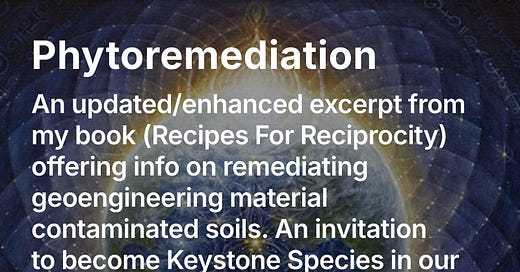



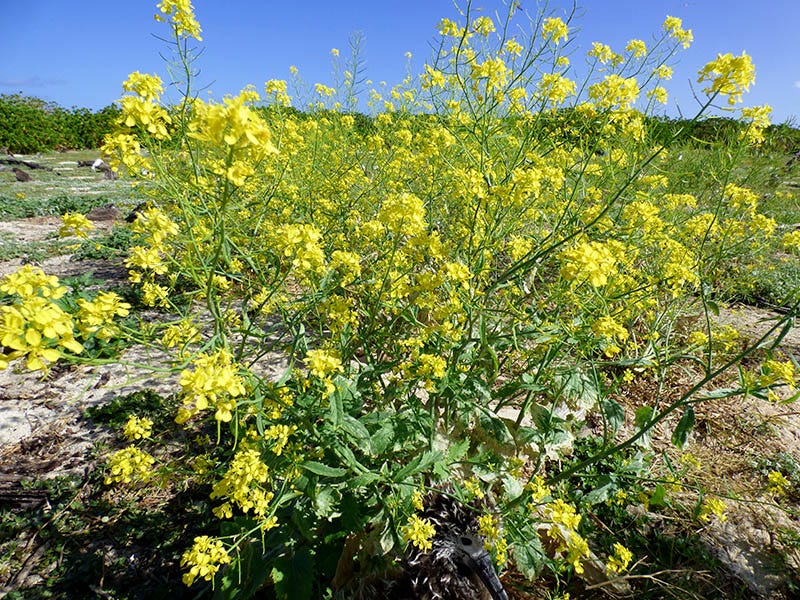

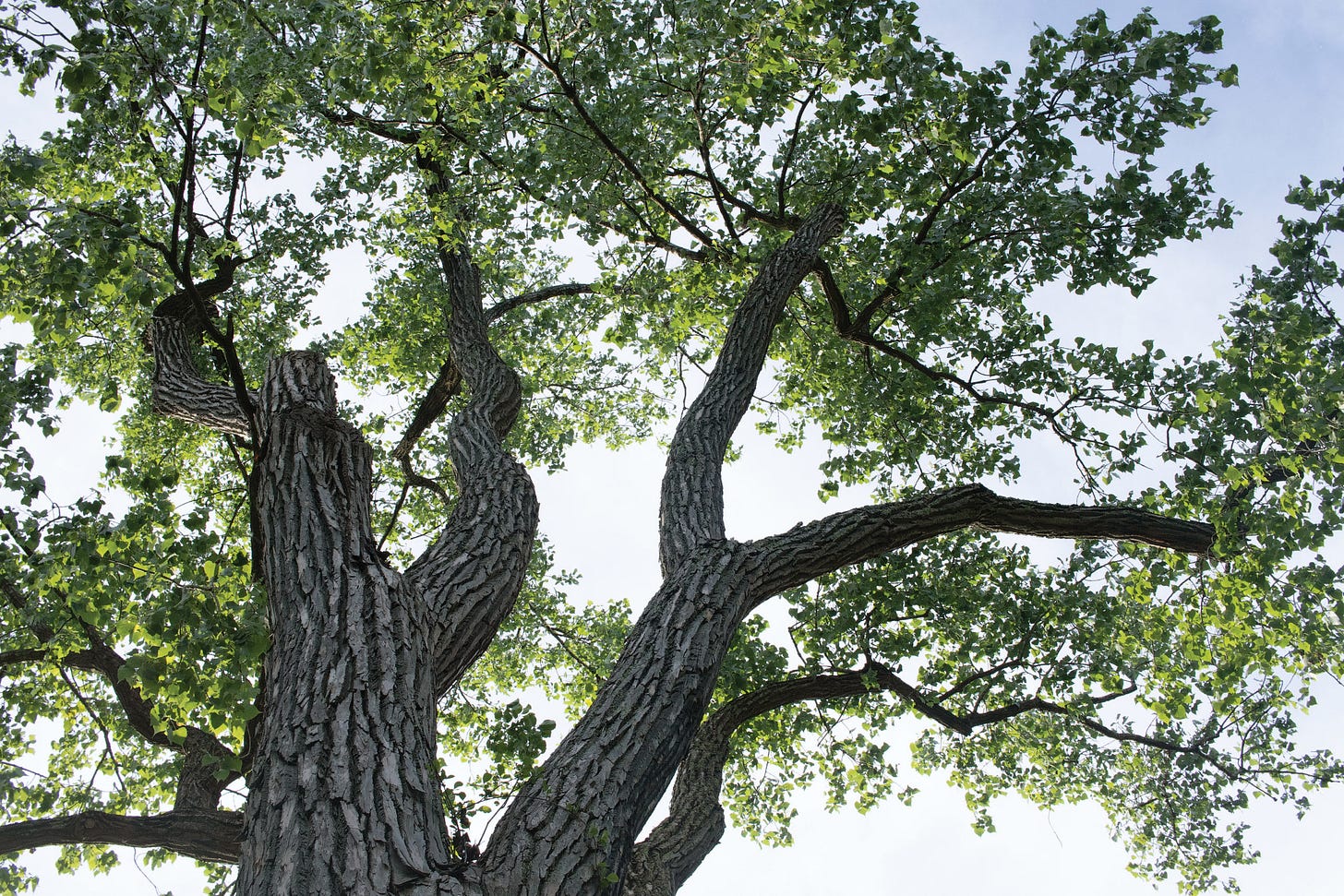
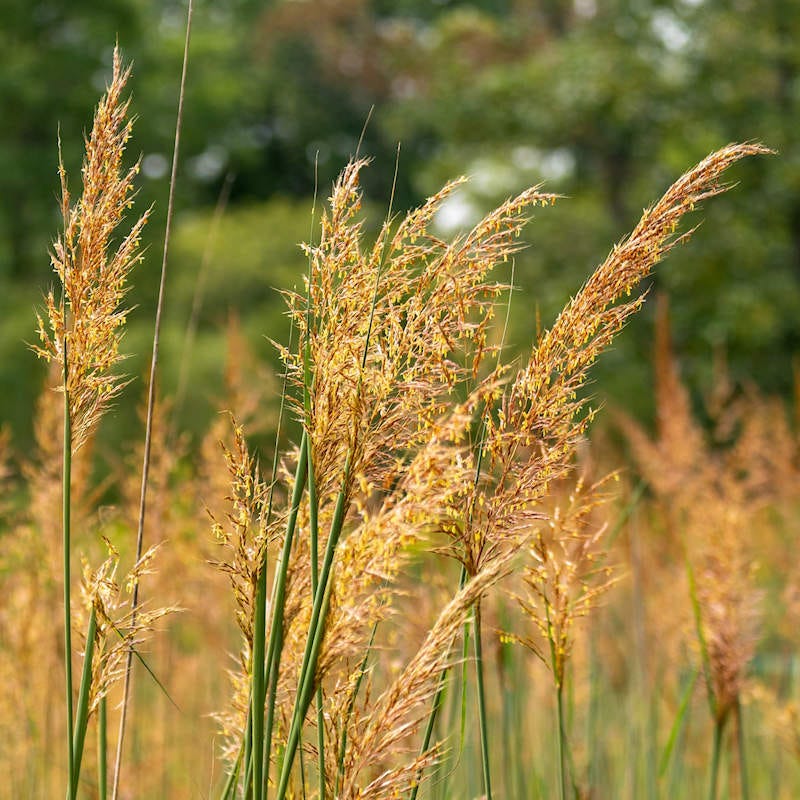
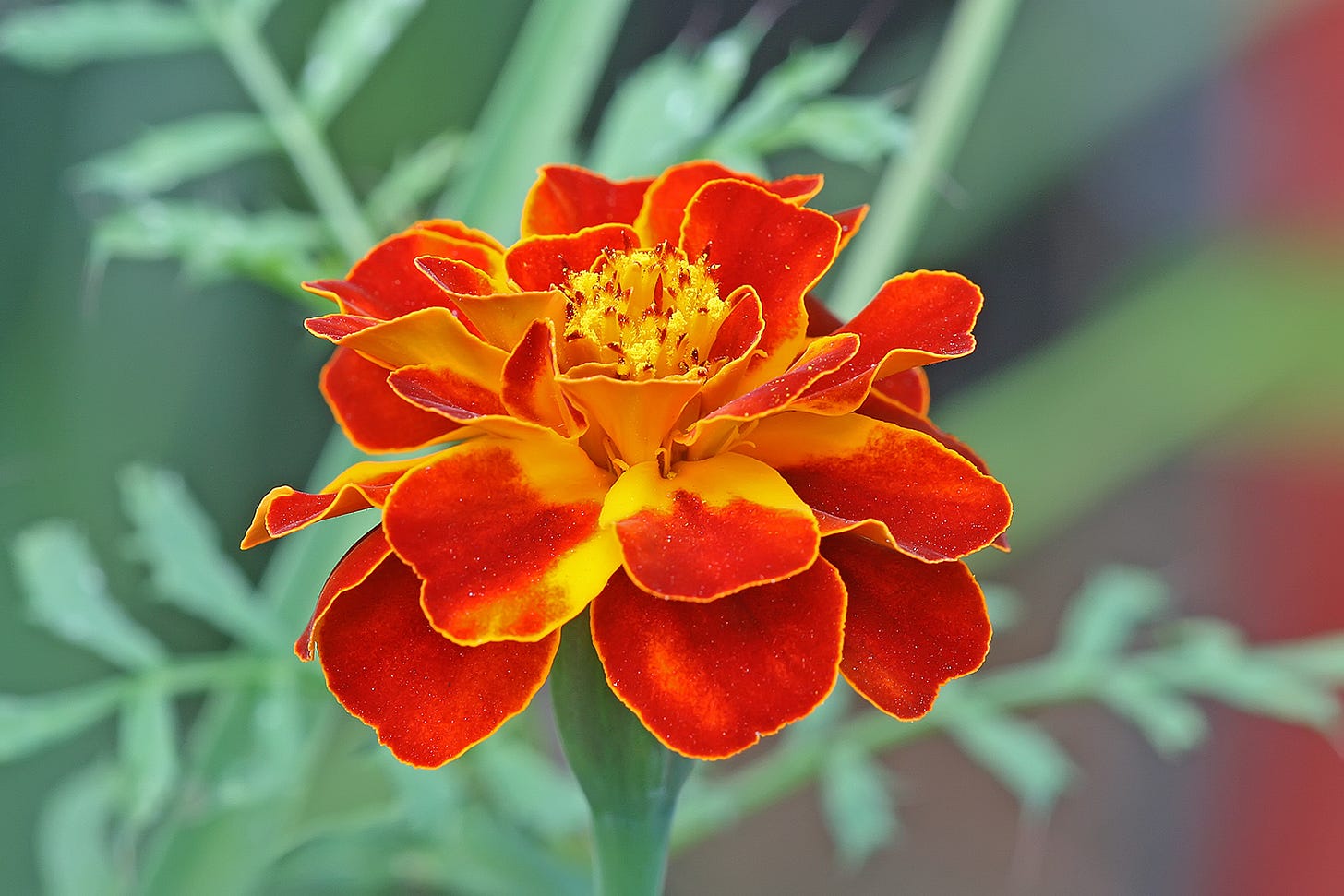


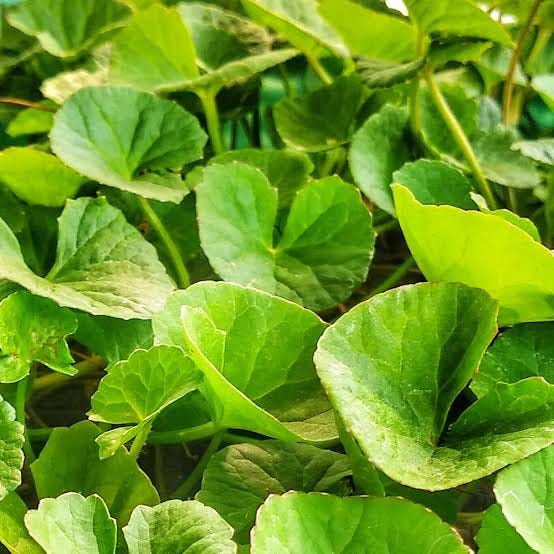


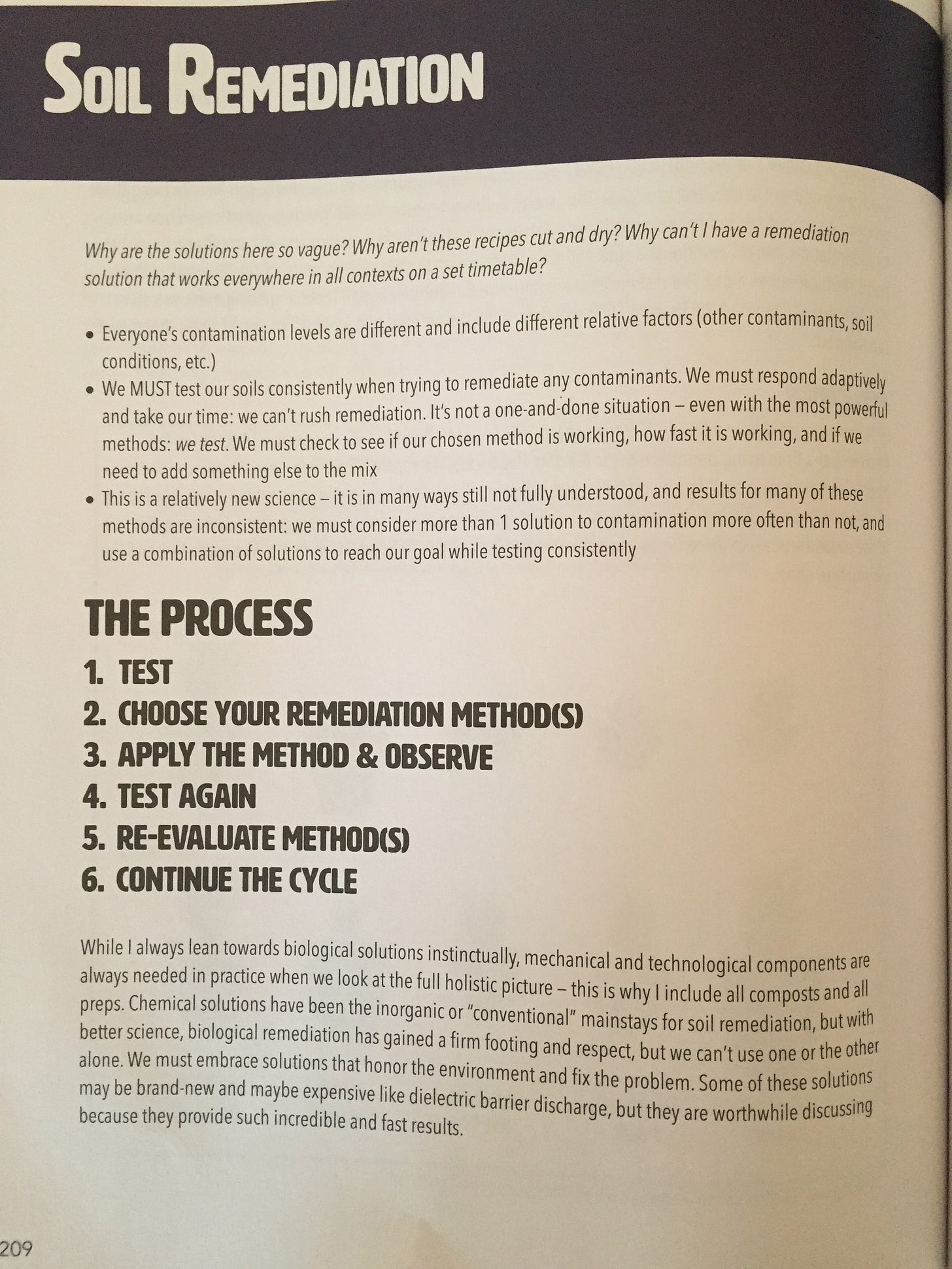
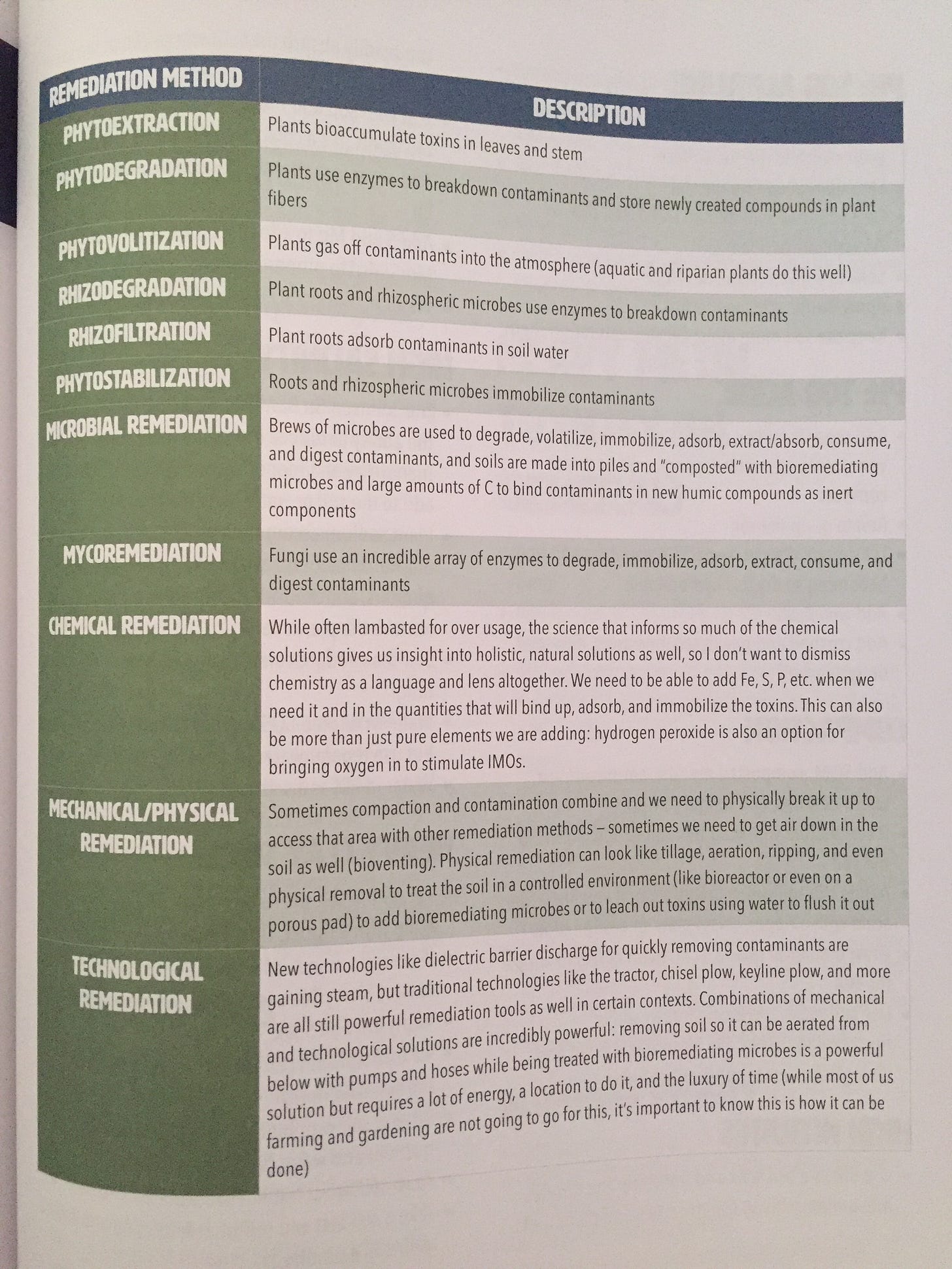

wonderfully useful! That
'Mimiso tree (Albizia julibrissin)" is also called acacia, isn't it??? It grows all over here. And it is beautiful, not only that it, the blossoms smell incredibly. This I found out only once, after covid can't smell them any more!!! And it was really special, because via that smell I started to remind some events when I was 4... !! I hate the 'covid' crime.
I hope you’re inviting the fungi. They have a knack with this sort of thing.